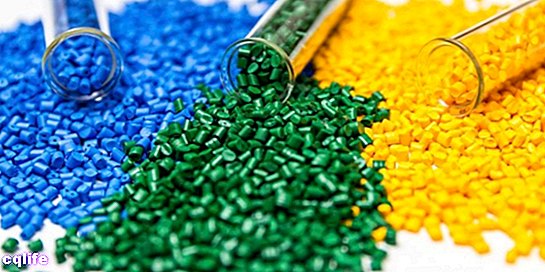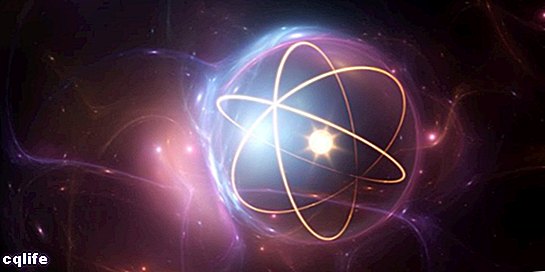- What is a molecule?
- Examples of molecules
- Types of molecules
- Differences between atom and molecule
- Water molecule
We explain what a molecule is and examples of this set of atoms. Also, the types that exist and their difference with the atom.

What is a molecule?
A molecule is a set of atoms (of the same chemical element or many different) that are organized and interrelated through chemical links. A molecule is also considered to be the smallest part of a substance which still preserves the physical and chemical properties of the substance. The molecules are usually chemically stable and electrically neutral.
The State of aggregation of a substance depends for the most part on the structure and the types of atoms that make up its molecules, since these determine the forces of the interactions between these particles. In this sense, solid are compounds that have very little separation between their molecules, liquids have a medium or intermediate separation between their molecules and gases they have a lot of separation between their molecules.
The study of molecules and their nomenclature It not only understands the number of atoms that compose them and the properties they present, but also their understanding from a three-dimensional model of their bonds and structures, that is, of the organization in space of their constituent atoms. This means that there are molecules that have the same atomic composition but different spatial structures (and that is why these molecules are named differently).
Molecules are very common in organic chemistry, since they are part of atmospheric gases and oceans. However, a large number of chemical compounds exist in the earth's crust that are not molecular. For example, most of the metals and minerals from the Earth crust they are not molecules. On the other hand, the crystals that make up the salts are not molecules either, despite being made up of repeating units.
It can serve you: Metallic bond, covalent bond, ionic bond
Examples of molecules

Some examples of common molecules are:
- Oxygen: O2
- Hydrochloric acid: HCl
- Carbon monoxide: CO
- Sulfuric acid: H2SO4
- Ethanol: C2H5OH
- Phosphoric acid: H3PO4
- Glucose: C6H12O6
- Chloroform: CHCl3
- Sucrose: C12H22O11
- Para-aminobenzoic acid: C7H7NO2
- Acetone: C3H6O
- Cellulose: (C6H10O5) n
- Trinitrotoluene: C7H5N3O6
- Silver nitrate: AgNO3
- Urea: CO (NH2) 2
- Ammonia: NH3
Types of molecules

Polymers are made up of macromolecules.
Molecules can be classified according to the complexity of their constitution:
- Discrete molecules. They have a defined number of atoms, either of the same elements or of different chemical elements. They can be classified, in turn, according to the number of different atoms that make up their structure: monatomic molecules (the same type of atom), diatomic molecules (two types of atoms), triatomic molecules (three types of atoms), tetraatomic molecules (four types of atoms), etc.
- Macromolecules or polymers. This is the name given to large molecular chains. They are made up of simpler pieces, which are joined together to achieve extensive sequences and which acquire new and specific properties. The plastics, for example, they are a composite material from organic macromolecules.
Polarity is a property that molecules have and is closely related to the separation of electrical charges that it has or that is generated within each molecule. This property influences solubility, since polar substances dissolve polar substances and apolar substances dissolve only apolar substances, although there are always intermediate situations. The melting points Y boiling, and even states of aggregation, are also affected by polarity. Therefore, molecules can also be classified according to their polarity in:
- Polar molecules. They are those formed by atoms with different electronegativity, that is, the atom with greater electronegativity attracts towards itself and with greater force the electrons of the bond, so there remains a density negative charge around it. Rather, a positive charge density will remain on the less electronegative atom. This process will finally lead to the formation of a dipole, which is a system of two charges of opposite sign and equal magnitude.
- Nonpolar molecules. They are those whose atoms have identical electronegativity, that is, they do not present inequality with respect to the attraction of the electrons and they retain a neutral charge in ordinary situation.
The symmetry of a molecule (the position that each of its atoms occupies in its structure) can also influence whether a molecule is polar or apolar. There are molecules composed of atoms of different electronegativity, but which are equally apolar, because when the charge densities of various parts of the molecule are added, these charges are canceled, and the molecule is finally neutrally charged, that is, without electrical charge.
Differences between atom and molecule

Molecules are made up of atoms linked together by chemical bonds, therefore atoms are smaller particles than molecules. In fact, most molecules can undergo disruption or lysis of their chemical bonds, transforming to simpler molecules, or to pure chemical elements, that is, atoms.
Water molecule

A water molecule contains only two elements: an oxygen atom and two hydrogen (H2O) covalently linked. This was discovered in 1782 thanks to the chemist Henry Cavendish, since water was thought of as an element since ancient times.
Water has a non-linear structure. Its two hydrogen atoms are bonded to the oxygen atom and form an angle of 104.5º to each other. This distribution of its atoms, added to the high electronegativity value of the oxygen atom, generates the formation of an electric dipole that determines the polarity of the Water. Therefore, water is a polar molecule.
Water is considered as the universal solvent, since almost all substances can be dissolved in it. Water soluble substances are polar and called hydrophilic. Nonpolar (apolar) substances, such as oil or gasoline, are called hydrophobic and do not dissolve in water.
The water molecule, extremely abundant on our planet, is also part of many organic substances and of the bodies of the animals and the plants.
